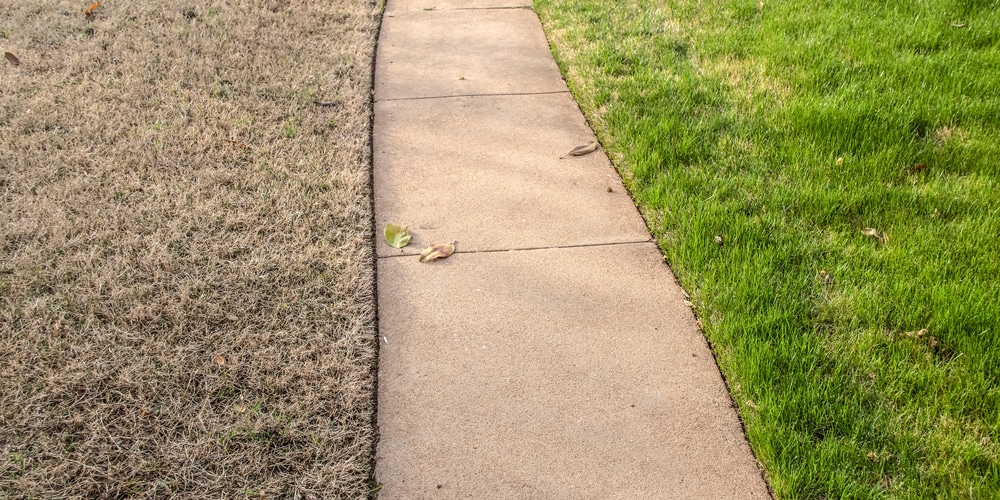There are many reasons why your Bermuda lawn might have spots of brown grass. As Bermuda is a warm-season grass, cold weather can affect it; if your yard has brown patches after a frost, this is the most likely answer.
Other things that can cause your grass to become thin and patchy include drought, fungal infection, drainage problems, and insect infestation. You’ll need to determine the cause of the problem before applying any corrective measures. This article will explain how you can figure out what’s wrong with your Bermuda grass and fix it.
What Causes Brown Spots in Bermuda Grass?

Many things cause brown spots in Bermuda grass: drought stress, frost damage, drainage problems, fungal disease, and insect infestation. Let’s look at each of these in more detail.
Frost damage
Frost damage occurs when the grass is left exposed to freezing temperatures for an extended period. As Bermuda grass is a warm-season grass, it’s affected by cold temperatures. Bermuda grass is relatively cold hardy, but if the temperature drops to below 50F, your lawn may start to discolor. Bermuda lawns become dormant during the winter months.
When frost damage occurs, green leaves turn yellow and then brown and may die. There are often dark patches of dead grass that can be seen on the lawn. If you’ve noticed the color change within the last 24 hours and the weather has been cold, this is the most likely cause.
There may still be hope for your lawn. Immediately following a light frost, you can use a rake or spray water on your lawn to remove any snow cover so that sunlight can help warm up the damaged grass tissues.
Drought
Drought stress happens when your Bermuda grass doesn’t get enough water at the roots. It can happen for all sorts of reasons, from a dry spring that turns into a drought, to too much shade in your yard with no rain in sight. Brown patches will appear on your lawn, and once the grass is dead, there’s no way for them to turn green again.
To prevent this problem, you can keep your Bermuda grass watered regularly enough. You can water your lawn at least once a week but no more than twice a week to prevent disease or fungus problems. The soil should be moist at least 6 inches deep after watering.
Drainage problems
If you live in an area with clay-like soil, you may have drainage problems that can cause root rot. The soil can be amended with sand or compost. You can also rent an aerator in the fall and early spring from a hardware store. This will help to relieve compacted soils that make it difficult for water and air to circulate in the ground.
Fungal disease
Lawn fungus problems, including dollar spot and brown spot, can also make your lawn look brown and patchy. Fungal diseases are very common in Bermuda grass. The fungi can be introduced through irrigation water, manure, or damp conditions.
Brown patch fungus causes round dead spots that are tan with greenish-yellow borders. They’re most severe during the warm months of summer when temperatures are above 80 degrees Fahrenheit (27 degrees Celsius), and there’s plenty of rainfall to promote growth.
Other symptoms include thinning patches of grass that may take on a yellowish color before turning brown. If you suspect your lawn has brown patch disease, send a leaf tissue sample to your local extension agency for diagnosis. To reduce the likelihood of fungal disease, don’t water your lawn in the evening. Fungus develops during the night due to heat and moisture. By watering your lawn in the early morning, excess moisture will have evaporated, making fungus less likely to grow.
Insect infestation
Insects such as chinch bugs, armyworms, mealybugs, spider mites, and billbugs can feed on Bermuda grassroots or leaves and cause brown spots that will diminish after you treat them with a lawn insecticide.
Conclusion
As you can see, there are many causes of brown spots in Bermuda grass, including drought stress, frost damage, fungal infection, and insect infestation. We also provided tips on how to repair your lawn if you’ve discovered the cause of the problem and want to do something about it. If problems persist after trying these measures, you should contact a lawn care professional for further assistance.